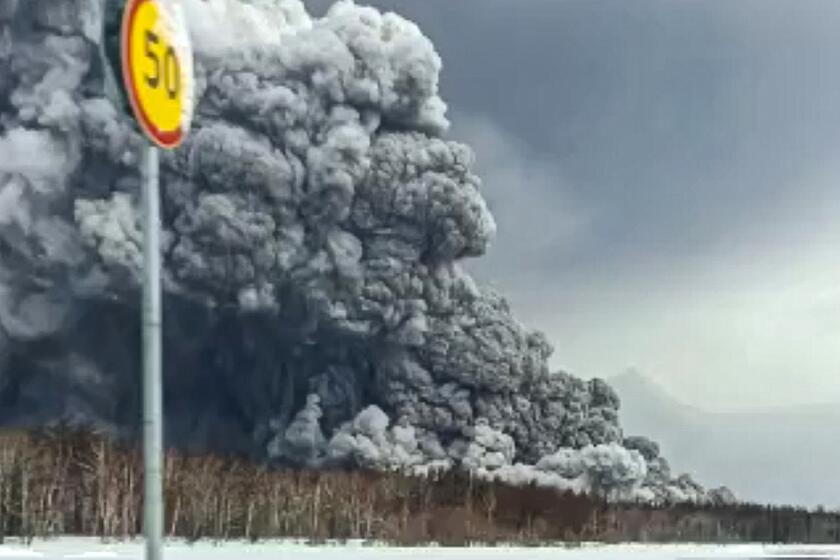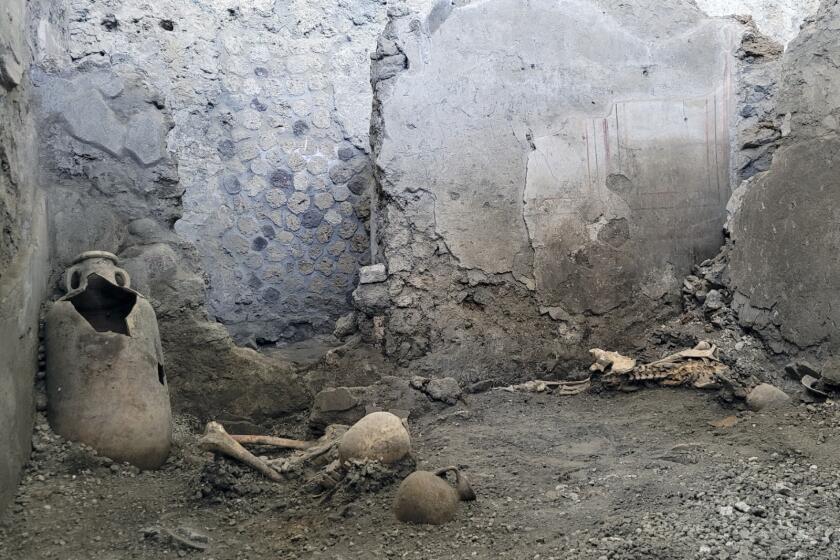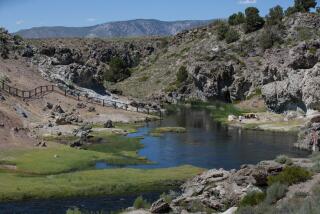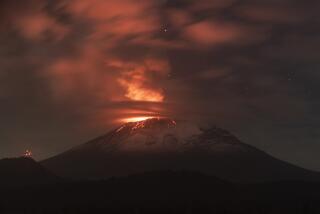Popocatepetl volcano, near Mexico City, has rumbled back to life, spewing clouds of ash

- Share via
MEXICO CITY — Mexico’s Popocatepetl volcano rumbled to life again this week, belching out towering clouds of ash that forced 11 villages to cancel school sessions.
The residents weren’t the only ones keeping a close eye on the towering peak. Every time there is a sigh, tic or heave in Popocatepetl, there are dozens of scientists, a network of sensors and cameras, and a roomful of powerful equipment watching its every move.
The 17,797-foot volcano, known affectionately as “El Popo,” has been spewing toxic fumes, ash and lumps of incandescent rock persistently for almost 30 years, since it awakened from a long slumber in 1994.
The volcano is 45 miles southeast of Mexico City, but lies much closer to the eastern fringes of the larger metropolitan area of 22 million people. The city also faces threats from earthquakes and sinking soil, but the volcano is the most visible potential danger — and the most closely watched. A severe eruption could cut off air traffic, or smother the city in clouds of choking ash.
Ringed around its summit are six cameras, a thermal imaging device and 12 seismological monitoring stations that operate 24 hours a day, all reporting back to an equipment-filled command center in Mexico City.
Thirteen scientists from a multi-disciplinary team take turns manning the command center around the clock. Being able to warn of an impending ash cloud is key, because people can take precautions. Unlike earthquakes, warning times can be longer for the volcano, and in general the peak is more predictable.
The Shiveluch volcano has erupted on Russia’s eastern Kamchatka Peninsula, sending ash 12 miles into the sky; and volcanic dust engulfs villages.
On a recent day, researcher Paulino Alonso made the rounds checking the readings at the command center run by Mexico’s National Disaster Prevention Center, known by its initials as Conapred. It is a complex task that involves seismographs that measure the volcano’s internal trembling, which could indicate hot rock and gas moving up the vents in the peak.
Monitoring gases in nearby springs and at the peak — and wind patterns that help determine where the ash could be blown — also plays a role.
The forces inside are so great that they can temporarily deform the peak, so cameras and sensors must monitor the very shape of the volcano.
How do you explain all of this to 25 million non-experts living within a 62-mile radius who have grown so used to living near the volcano?
Two skeletons discovered in Pompeii belong to men who died from a wall collapse during the strong earthquakes that accompanied Mt. Vesuvius’ eruption, scientists say.
Authorities came up with the simple idea of a volcano warning “stoplight” with three colors: green for safe, yellow for alert and red for danger.
For most of the years since the stoplight was introduced, it has been stuck at some stage of “yellow.” The mountain sometimes quiets down, but not for long. It seldom shoots up molten lava and is more the “explosive” type, showering out hot rocks that tumble down its flanks and emitting bursts of gas and ash.
The center also has monitors in other states; Mexico is a country all too familiar with natural disasters.
For example, Mexico’s earthquake early-alert system is also based at the command center. Because the city’s soil is so soft — it was built on a former lake bed — a quake hundreds of miles away on the Pacific Coast can cause huge destruction in the capital, as happened in 1985 and 2017.
A system of seismic monitors along the coast sends messages that race faster than the quake’s shock waves, and can give Mexico City residents up to a half-minute of warning, once the sirens start blaring, to get to safety, usually on the streets outside.
More to Read
Sign up for Essential California
The most important California stories and recommendations in your inbox every morning.
You may occasionally receive promotional content from the Los Angeles Times.












